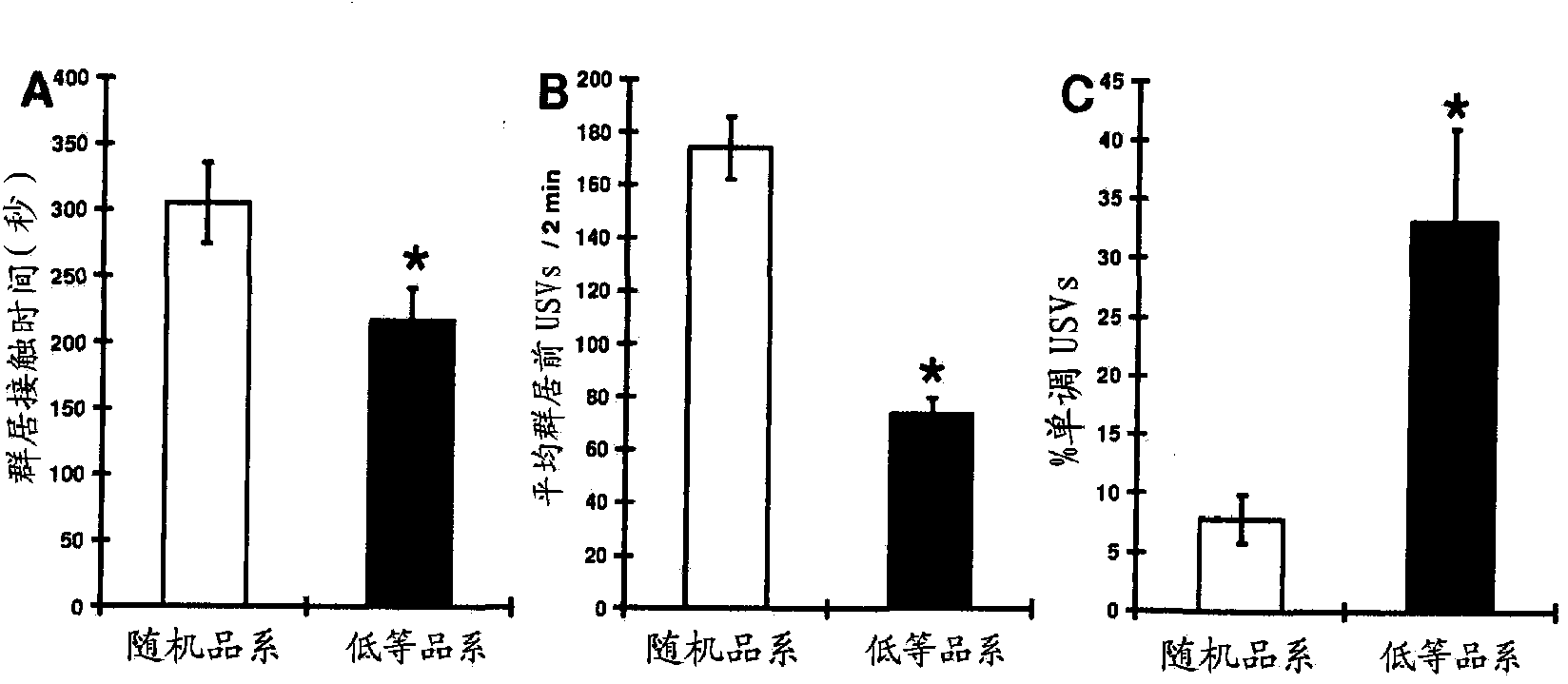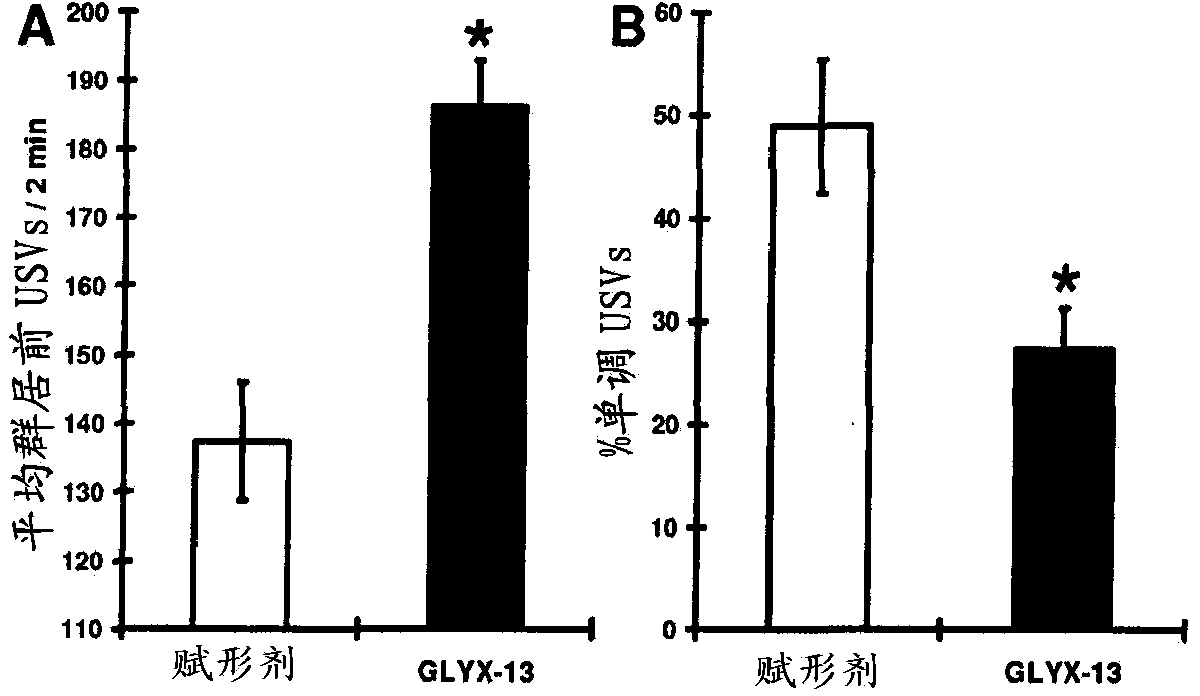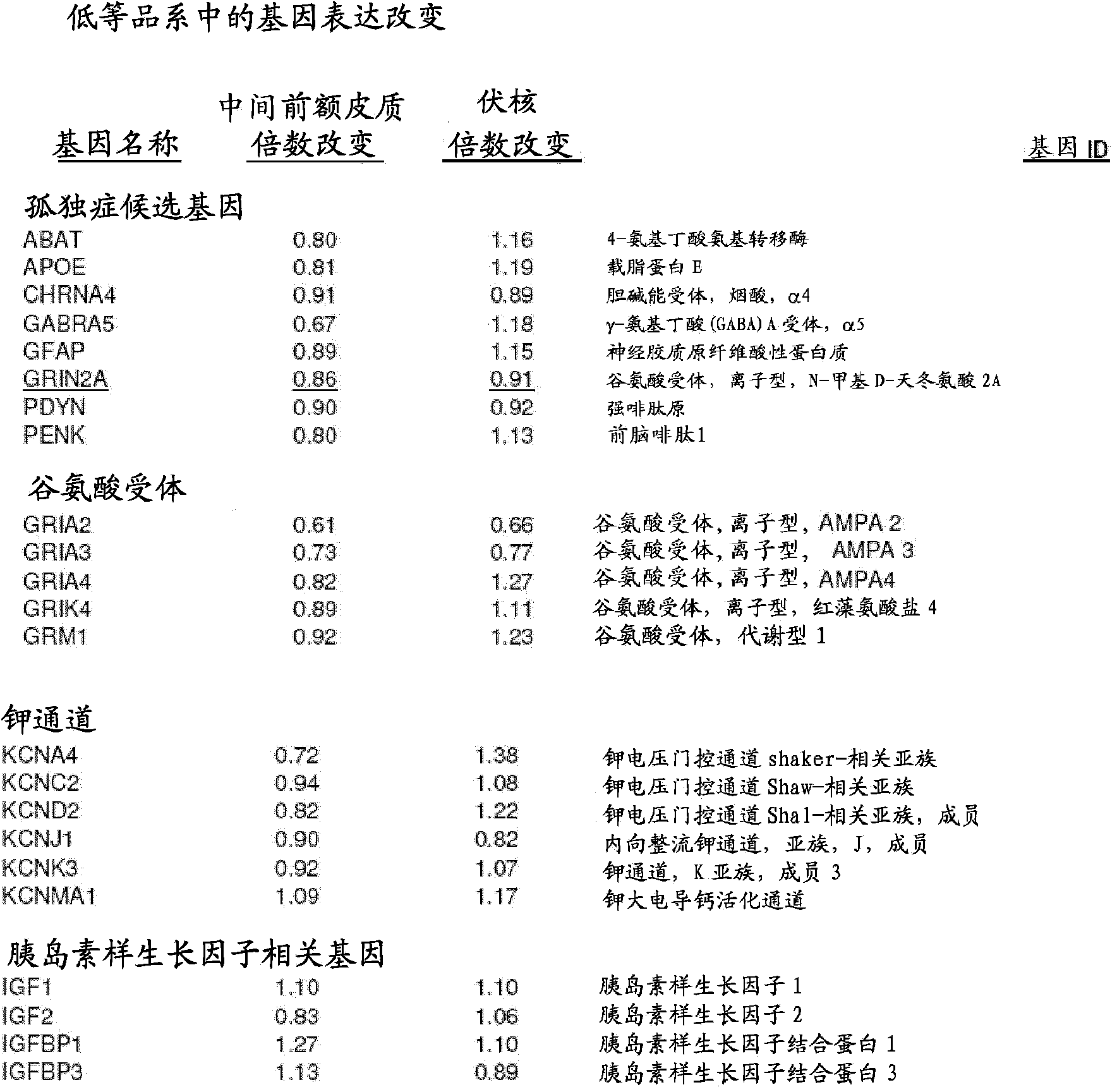Methods of treating alzheimer's disease, huntington's disease, autism, or other disorders
An autism-independent technology with applications in the treatment of Alzheimer's, Huntington's, autism and other disorders
- Summary
- Abstract
- Description
- Claims
- Application Information
AI Technical Summary
Problems solved by technology
Method used
Image
Examples
Embodiment 1
[0080] Example 1: USVs of low-grade strains compared to random strains of rats
[0081] The core symptoms of autism (1) deficits in social affect and motivation, 2) communication problems, and 3) high incidence of activity abnormalities, especially repetitive behaviors) can be modeled in animals separately using the following behavioral measures: (1) spending on Decreased time in social contact; (2) reduced proportion of pre-social vocalizations; and (3) intermittent ultrasonic vocalization patterns.
[0082] Adult male Long Evans rats were selectively bred for low or random ratios of play-induced presocial ultrasonic vocalizations (USVs) (ie, frequency-regulated 50-kHZ USVs in response to rough and tumbling play behavior). Conspecific test animals of the same selective breeding strain were used. figure 1 A depicts the mean±SEM time these rats spent in direct social contact. figure 1 B represents the proportion of conspecific play-induced pre-social USVs (frequency-regulat...
Embodiment 2
[0084] Example 2: Effect of GLYX-13 on conspecific play-induced pre-social USVs
[0085] as figure 2 As shown in A, conspecific play-induced presocial USVs (frequency-modulated 50 kHz calls) were determined in juvenile male lower-strain rats pretreated with vehicle (1 mg / ml sterile saline s.c.). figure 2 B shows the results of treatment with GLYX-13 (50 mg / kg s.c.) for 15 min before the start of the test using a within-subject design. Monotonic (i.e. below 7kHz bandwidth) proportions of total homogeneous play-induced USVs such as figure 2 shown in C. n=9 / group. *P<.05 Fisher PLSD 2-tailed causality test. GLYX-13 significantly increased the play-induced proportion of pre-social USVs and significantly decreased the monotonic proportion of total USVs.
[0086] These results show that GLYX-13 can reverse social / emotional communication deficits in lower strains of rats.
Embodiment 3
[0087] Example 3: Altered Gene Expression in Lower Strain Animals
[0088] Alterations in gene expression in two brain regions (the mesial prefrontal cortex and the nucleus accumbens) of animals of lower strains were examined by microarray using the method described above in Burgdorf et al., Neuroscience 168, 769-777 (2010), have been These two regions were shown to be functionally associated with play-induced presocial vocalizations (Burgdorf et al., Behav Brain Res 182, 274-283 (2007).
[0089] The list of genes significantly altered in two brain regions of adult lower-strain animals compared to non-selectively bred adult random-strain animals is shown in image 3middle. There was a statistically significant overlap between human autism-associated genes and genes differentially expressed in lower strains of animals (8 altered autism candidate genes / 101 total altered gene representation vs. 25 / 1108 fragmented groups 3.5-fold enhancement compared to chip set bias; P<.05; c...
PUM
 Login to View More
Login to View More Abstract
Description
Claims
Application Information
 Login to View More
Login to View More - R&D
- Intellectual Property
- Life Sciences
- Materials
- Tech Scout
- Unparalleled Data Quality
- Higher Quality Content
- 60% Fewer Hallucinations
Browse by: Latest US Patents, China's latest patents, Technical Efficacy Thesaurus, Application Domain, Technology Topic, Popular Technical Reports.
© 2025 PatSnap. All rights reserved.Legal|Privacy policy|Modern Slavery Act Transparency Statement|Sitemap|About US| Contact US: help@patsnap.com



